

Uh oh...
It appears that you're using a severely outdated version of Safari on Windows. Many features won't work correctly, and functionality can't be guaranteed. Please try viewing this website in Edge, Mozilla, Chrome, or another modern browser. Sorry for any inconvenience this may have caused!
Read More about this safari issue.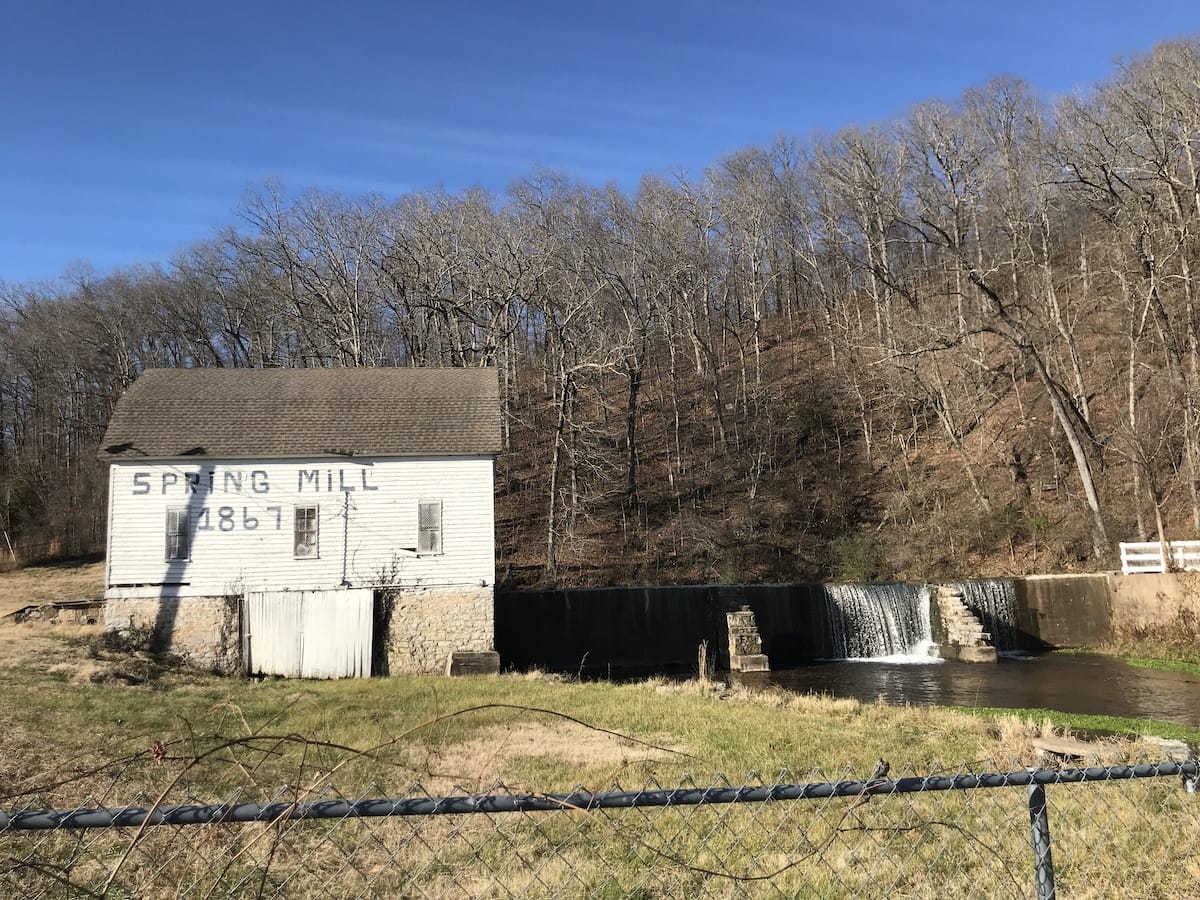

Just six miles outside of Batesville on Highway 69 stands a white structure with “Spring Mill 1867” emblazoned on its side. It’s the type of building one drives by time after time, wondering for a moment about its history before going on with life. You forget about it until the next time. But, for that one moment, you may think, “Surely this building has a story to tell.”
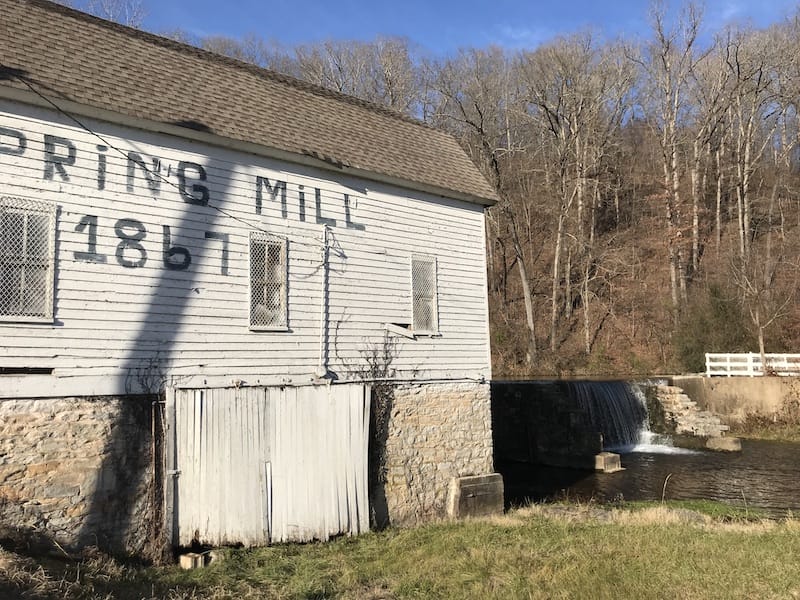
Anthony N. Simmons was born and raised in Tennessee before he moved to Arkansas with his mother in 1848 at the age of 14. He lived in Woodruff County, serving as Justice of the Peace, and in 1861, he enlisted in Company C of the Confederacy but was discharged due to illness only 36 days later.
Well-known in the farming and milling industries, Simmons moved to the Batesville area in 1865 following the end of the Civil War. There, he became involved in manganese mining when he discovered and mined about a half a car full of manganese from the Polk Bayou (historically Poke Bayou) in 1888. The Polk Bayou Mining Company continued to mine what was known as the Simmons Prospect until 1918, and, while it did produce a small amount of manganese, the site was not as prolific as other mines in the area.
Simmons was more successful at milling. Upon arriving in Batesville in 1865, he purchased and ran an existing mill and went on to acquire another mill along with 210 acres that had been almost 60% cultivated. Although he was a skilled farmer, his primary focus was on milling, and he built Arkansas’s first water-powered stone grist mill beside a cold spring just north of Batesville. Just two years after the end of the Civil War in 1867, Spring Mill was built by notable architect and engineer Lieutenant Colonel John Adams Schnabel (spelled Schnable according to some sources).

Col. Schnabel was a German immigrant who arrived in Virginia in 1851, and he was later appointed as Captain of the Virginia Militia by Virginia Governor and U.S. Secretary of War, John B. Floyd. Schnabel and his troops most notably helped to restore order at Harpers Ferry following the John Brown Raid in 1859. Upon leaving Virginia, Schnable traveled to western Missouri and joined the Confederacy at Yellville where he served as a Lieutenant Colonel with the Missouri Cavalry. Schnabel, trained in engineering, was contracted by Simmons to build the Spring Mill. He also constructed two local bridges that were lost to flood and time, and he built the original Jackson County Courthouse which now houses the Jacksonport State Park Museum.
Constructed on a rock foundation and topped with a three-story hand-hewn wooden frame, the mortise and pegged structure was carved completely by hand, including the square ‘nails’ visible in the picture below.

In later years, the building also housed a general store and then a pioneer artifacts museum at the front of the building. The mill’s gears and mill box were located on the first floor, the hopper and burrs on the second floor, and the third floor was devoted to storage.
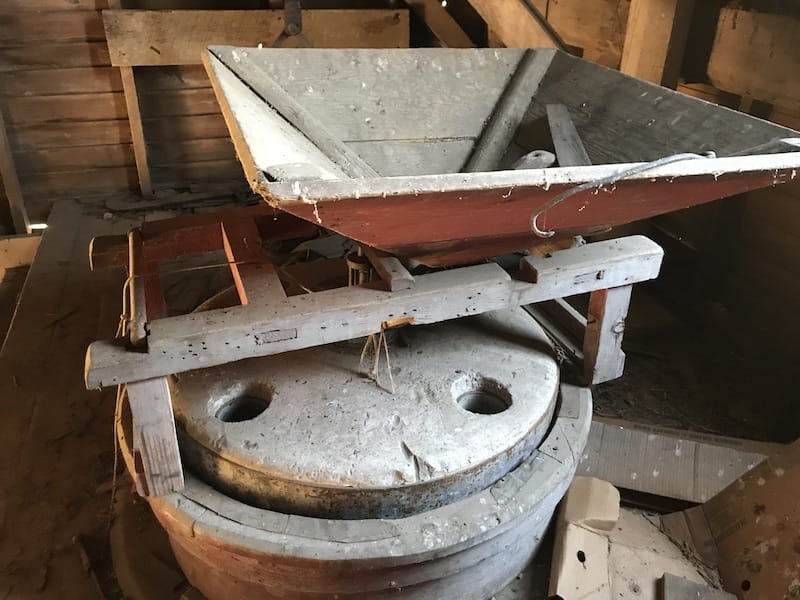
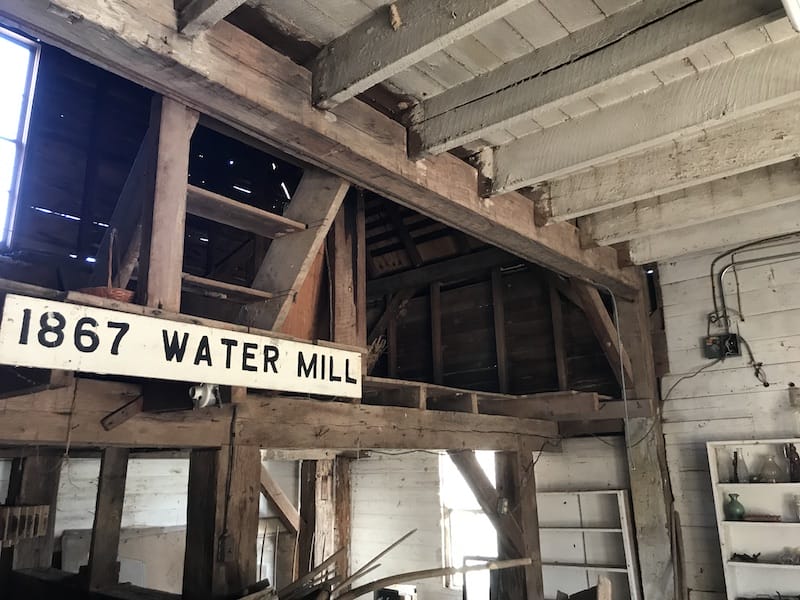
A rock dam was built adjacent to the building and replaced a 1850s wooden dam that had provided water for an older mill that was located about 200 yards downstream. Construction of the new dam allowed Simmons to use water to power the grinding stones. Initially, several small gates opened and closed to control the release of water from the spring into the forebay (a concrete tank that housed a turbine) which stopped and started the mill. When these stopped working, a water gate was added to control the mill.

Power was then transmitted to the burr stones through steel shafts that were controlled by gearwheels, one metal and one fitted with wooden teeth. The teeth were originally constructed of persimmon wood but were replaced with oak in 1963. The combined metal and wood gears were thought to reduce friction and noise.
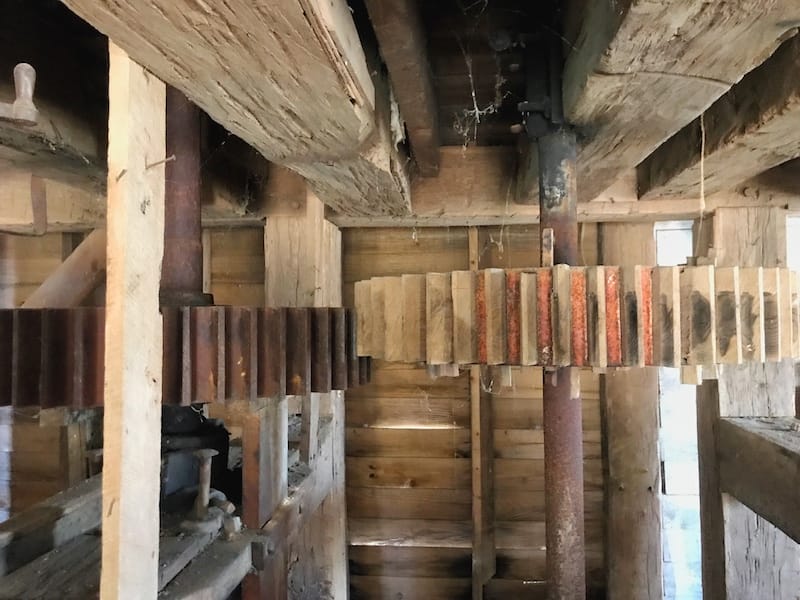
Considered state-of-the-art at the time of its construction, the mill was in operation until the mid-1960s. Still in excellent condition when it closed, the mill has been well cared for over the years by a succession of owners.
In 1871, Simmons sold the mill to James Miller and Thomas B. Roddy who sold it to Jordan James in 1873. James operated the mill until 1911. Some historical documents refer to the mill as the James Mill because of its success during that time. Found dead in the Spring Creek in 1911, James’ death remains a mystery, but he is buried along with five others, two graves of which are unmarked, in the James Cemetery across the road from the mill.
Following his untimely death, James’ wife sold the mill to C.W. McRory in 1913 who owned it until 1915. Spring Mill then went through a succession of owners including D.R. Headstream from 1915 to 1917 and J.W. Coon from 1917 to 1935. In 1935, the mill was purchased by J.A. Lytle, Sr. and remained in continuous operation through the 1960s.

In October 1973, William E. Henderson, an Arkansas Historic Preservation Officer, nominated the property for the National Register of Historic Places. At the time, the property was owned by Mrs. J.A. Lytle, Jr., and though not operational, Mrs. Lytle regularly opened the mill to the public. The mill received its National Historic Register designation on March 1, 1974.
In 1976, as part of the United States’ bicentennial celebration, the Bicentennial Wagon Train pilgrimage to Pennsylvania traveled across the county in authentic covered wagons built in Arkansas. As the train passed through Arkansas in late March and early April of 1976, Ora Mae Stewart Lytle ground meal for the Bicentennial Wagon Train journey at Spring Mill which is the last documented use of the site.

The story of the mill doesn’t end there. Heirs of J.A. Lytle owned the mill property until 2016 when Ruth Kay Lytle passed away at the age of 76. Following her death, the family decided to sell the property which included the mill, a home, several rental properties and about 400 acres of land. Roy Gillihan, who grew up in the area, became interested in the property for sentimental reasons, and not wanting the mill to fall into the wrong hands, purchased the property with his son, Michael.
“When I was a kid, we would pass through here when my dad needed to go to Newport. He was never really concerned with time, and on the way back we would always stop at the mill. There were these huge trout, and Mrs. Lytle would sell us fish food, and we would stand out there in the stream and feed the fish. It’s a great memory.”
Although the mill was in rough shape, the Gillihans plan to restore some of the mill’s former glory. All of the original mill equipment is intact, and Gillihan believes everything is still functional and that much of the work is cosmetic. The family spent much of the summer working to remove brush and debris from the pond and the dam, and their next goal is to reconstruct the entry porch, replace the shingled roof with a traditional tin roof, and repaint the structure. Gillihan indicated that he intends to restore the interior to a point where they can open the facility to the public and possibly use it as a wedding venue. There are also plans to bottle water from the spring.
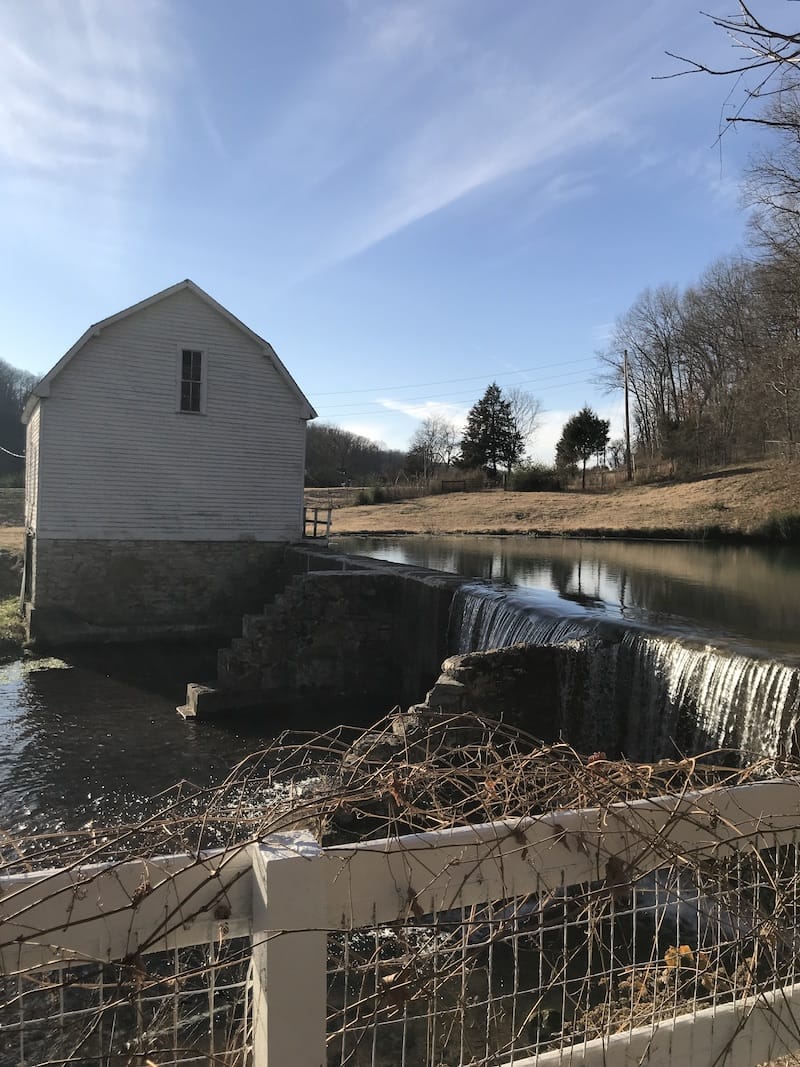
Quite often, historic properties fall to time and neglect. Fortunately for the Spring Mill, the property was well-loved and cared for over the years. As the mill slides into her 152nd year, she still needs some work, but it appears that her glory days are far from over.
So, as it turns out, Spring Mill does, indeed, have a story to tell. More than just an old building outside of Batesville, her place in history is still being made, and if the past is any indication, generations from now may very well pass her by and wonder about her story.
Special thanks to Roy and Michael Gillihan for answering questions, providing historical information, and for allowing me to explore this amazing little piece of Arkansas history.
We do the work.
You check your email.
Sign up for our weekly e-news.
Get stories sent straight to your inbox!









 Leave a Reply
Leave a Reply
We love old Mill’s and would love to view this old mill if possible.
We are building an authentic water powered grist mill in Pottsville, AR as well.
Do you have a contact for the current owners of the Spring Mill?
Thanks
-Eric & Holly Edens
Hi Eric & Holly! It looks like you can contact the owners via email: millspring262@gmail.com or their Facebook page: https://www.facebook.com/profile.php?id=100064840238397.